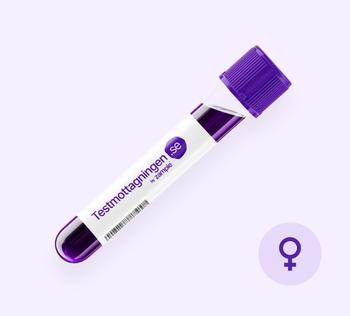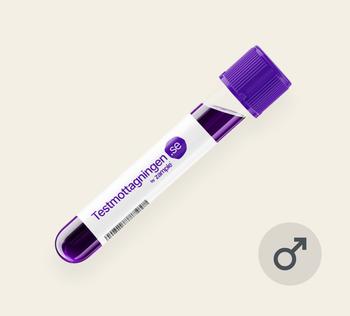Quick version
You don't have to count every step – but you should move regularly. According to the WHO and the Swedish Public Health Agency, a 30-minute brisk walk five days a week is enough, which corresponds to approximately 7,000–8,000 steps per day. Many people manage 5,000 steps just through everyday movement – add a walk and you'll reach the goal.
- Adults: 7,000–8,000 steps/day
- Elderly: 7,000–10,000 steps/day
- Children and young people: 10,000–15,000 steps/day
All movement counts – even small increases in everyday life make a big difference to health. Is 10,000 steps per day a myth? Read on in the article below for the answer.
In this article, we review both official guidelines and the latest research on how many steps per day are recommended. We look at different age groups, compare everyday movement with intensive training, and explain why 10,000 steps is not always necessary – and how even moderate increases in your daily activity can have major health benefits.
10,000 steps a day – myth or goal?
The goal of walking 10,000 steps per day has become something of a gold standard in health apps and fitness trackers around the world. But the fact is that this number originally came not from medical research, but from marketing. In the 1960s, a Japanese pedometer was launched and was named the “10,000-pedometer” mostly because it sounded good and because the sign for “10,000” looks like a walking person. There was no scientific basis for 10,000 steps at the time. Despite this, 10,000 steps has become a popular goal, and that many steps certainly indicate a high level of activity. But health experts emphasize that there is no magic limit at just 10,000 steps – the positive health effects of physical activity come gradually long before that.
To put the number in perspective, you can look at how daily step counts are usually categorized:
- Under 5,000 steps per day: sedentary lifestyle (inactive)
- 5,000–7,499 steps per day: low activity
- 7,500–9,999 steps per day: somewhat active
- Over 10,000 steps per day: active
- Over 12,500 steps per day: very active
*These categories are based on guidelines from 10,000 Steps Australia.
In other words, the figure of 10,000 steps a day is an ambitious goal that also signals high activity, but there is no sharp line between "healthy" and "unhealthy". Being over 10,000 steps rather means that you are very active, while fewer than ~5,000 steps indicates a sedentary lifestyle. Many people can therefore improve their health long before they reach ten thousand steps.
Official guidelines - this is how much you should move
Both international and national health authorities have general guidelines for physical activity - these are usually formulated in time and intensity rather than in steps. The World Health Organization (WHO) and the Swedish Public Health Agency recommend that adults be physically active for at least 150 minutes per week of moderate intensity activity (e.g. brisk walking) or at least 75 minutes per week of vigorous intensity activity (e.g. running). In addition, muscle-strengthening activities should be performed a couple of times a week. This amount of activity corresponds to approximately 30 minutes of brisk walking, five days a week, which in turn can be converted into a certain number of steps. According to experts, 150 minutes of weekly activity corresponds to approximately 7,000 steps a day or more.
In fact, many of us get around 5000 steps on a typical day just through everyday activities, and if you add about 2000–3000 steps (equivalent to a half-hour walk) you reach a total of about 7000–8000 steps per day, which seems to be a good target level for health.

In its national guidelines, the Swedish Public Health Agency has translated the general advice into approximate numbers of steps per day for different age groups. Their recommendations can be summarized as follows:
- Children 4–6 years: 10,000–14,000 steps per day
- Children 7–12 years: 10,000–15,000 steps per day
- Teenagers: 10,000–12,000 steps per day
- Adults: 7,000–8,000 steps per day
- Older adults: 7,000–10,000 steps per day
Children and young people have higher step recommendations – the reason for this is that they move very naturally and should be encouraged to a high level of activity to promote growth and health. For adults, 7,000–8,000 steps daily is a level where you meet the guidelines and get good health effects, according to the Swedish Public Health Agency. Older adults (65+ years) can aim for at least about 7,000 steps, but if they can manage up to 10,000, that's excellent. At the same time, the agency emphasizes that all movement during the day is valuable.
Conclusion – every step counts
The optimal number of steps per day therefore depends on the individual’s circumstances and goals. To reduce the risk of most health problems, both guidelines and research show that around 7000–8000 steps per day is a good benchmark for adults.
If you are younger and very active, you can aim higher (upwards of 10,000 steps or more), and if you are older or not used to exercise, you can know that already around 5000–7000 steps provide significant improvement compared to a sedentary life.
In other words, you don’t need to achieve some magical 10,000 steps to feel better – even a relatively modest increase from your current level can have a big effect. For example, a person who currently only walks 3000 steps per day can notice a big difference in energy and health values if they gradually increase to 5000–6000 steps per day. The most important thing is to break long-term sedentary lifestyles and move regularly.
So continue to move in your everyday life – regardless of whether your goal is 5,000, 8,000 or 10,000 steps – because every step you take contributes to better health and well-being.
























